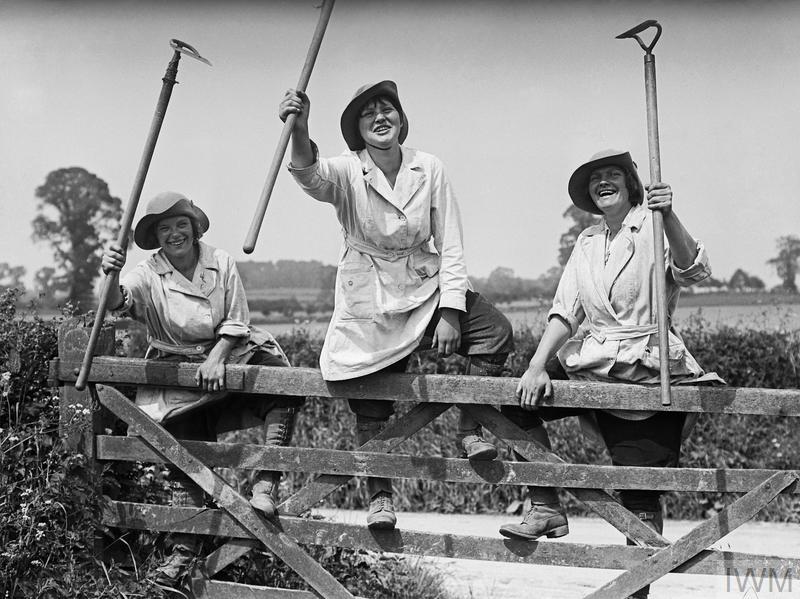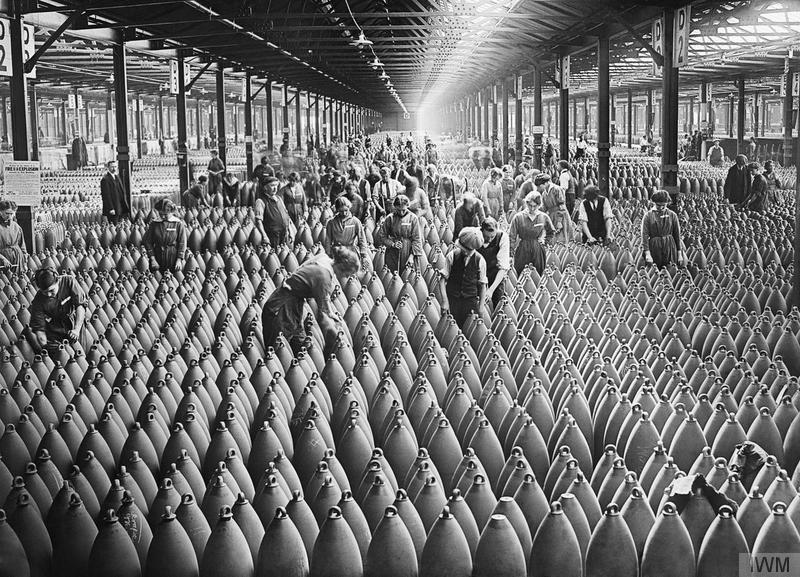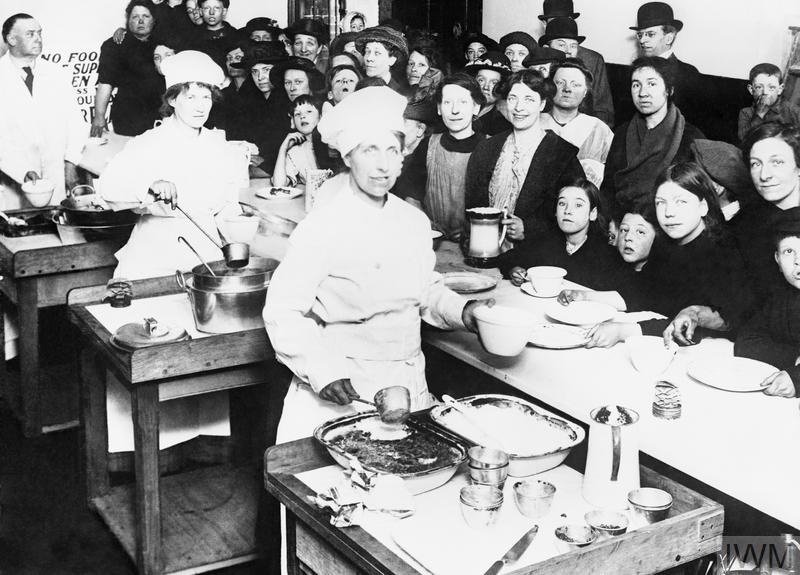Big Recording Month- Week 2: Finding Sites

Sale of war bonds from the Mark VI tank 130 “Nelson” (probably) in Trafalgar Square during the “Tank Banks” fundraising campaign, 4-9 March 1918 © IWM (Q 54378)
This week we’ll look at finding Home Front sites in your local area using readily available sources of information. There’s plenty of information out there to help you start your Home Front journey and you don’t need any prior experience to get started. Research doesn’t just involve re-discovering unrecorded sites; contributing further information to records of known sites is just as important. The sources of information provided here can be used to find a whole range of Home Front sites, however we will be focussing on our themes of: Local Events, The Role of Women & Food and Rationing.
It is best to find out as much information as possible; especially the dates when the site was in use, its wartime function, the details of people connected to the site and information about your site’s surviving features.
Sources of Information
There are plenty of on-line and off-line sources of information that can be used to re-discover and record Home Front sites where you live. Often a simple search of the internet or local archive will set you on your way to re-discovering the local Home Front.
Internet Searches
A quick Google search may reveal blogs, websites and documents that provide useful information. Search terms such as ‘WW1 in [insert local place]’ or ‘WW1 Hospitals in [Insert local place]’ are a good place to start your internet research. Remember to keep a note of the web address as you will need to include this as a source when recording sites you find on the internet.
The Historic Environment Record
Your local Sites and Monuments Record (SMR) and Historic Environment Record (HER) curate information about known historical and archaeological sites; this information is used to inform local planning decisions. Records can be accessed by members of the public with an interest in local history. Find out more about HERs and SMRs here
Contact details for your local HER/SMR can be found via the Heritage Gateway website.
The Heritage Gateway website also allows you to search HER/SMR records online, again this is a great starting point for your research and finding sites in your local area. Contributing new information to known sites that is highly important as new information helps us to better understand these sites.
Local Archives, Local Studies Libraries & Libraries
Your local archive is one of the best sources of information for investigating the local area. The local archive may be able to point you in the direction of useful documents and reports which may lead to the re-discovery of a site. Local newspapers from the First World War period are a great starting point and are often easily accessible. You will need to register to access the archive so be sure to contact your local archive before visiting. You can find your local archive here
Local history books, held within local libraries are another source of useful information.
Remember, you will need to add the archive reference number or book reference as a source within your record, so keep a note of these.
Researching Our Themes
Here are some sources of information you can use to research our Big Recording Month themes.
Local Events

Trafalgar Square during the ‘Feed the Guns’ campaign of October 1918 © C. Kolonko
Local events such as recruitment drives, war bond fund raisers, air raids, strikes and protests can be recorded if they can be tied in to a location or building. Many of these events have long since been forgotten.
The BBC’s World War One at Home page features many fascinating stories and events from the Home Front and feature a wide range of potential sites for you to record. These stories are also categorised by BBC radio station location, which makes finding local stories a lot easier.
Local newspapers are the best source of information for local events; it is often only a matter trawling newspaper articles and simple detective work to trace the buildings or land used during these events. You can visit your local archive or library to get started.
Postcards provide a visual record of many Home Front sites. Sourcing contemporary postcards can be undertaken relatively cheaply through collector’s fairs, antique shops and online. Our Postcards case study will show you how to use postcards to identify and record forgotten events.
Air Raids

Zeppelin Raid Bury St Edmunds April 30 1915 © C. Kolonko
Ian Castle’s Britain’s First Blitz 1914-18 website features accounts of all air raids against the UK from 1914 to 1918. These accounts provide information about the places where bombs fell and the buildings damaged during the raids. The accounts also highlight the locations of anti-aircraft defences; all of which can be recorded with our recording app.
Our Researching and Recording Air Raids case study shows how you can use this amazing resource to record the sites associated with air raids during the First World War.
The Role of Women
Hospitals and War Hospital Supply Depots

Female staff of the Alderley Edge Surgical Requisites Guild at work. The unit ran as a branch of Princess Beatrice’s Central Depot (for hospital supply) © IWM (Q 108572)
The Scarlett Finders website is a great source of information when researching First World War Voluntary Aid Detachment (VAD) hospitals. The website also features an extensive two-part list of War Hospital supply depots which were established to produce, and source supplies for nearby War Hospitals.
The Red Cross website features a wealth of information about Auxiliary Hospitals. A list of Auxiliary Hospitals is also available which will provide you with many avenues of investigation.
The Women’s Land Army

Three members of the Women’s Land Army raise their hoes in salute © IWM (Q 30678)
The Women’s Land Army website features an archive of First World War information. Your local archive may also hold information relating to the recruitment or work of the Women’s Land Army in your local area.
Munitionettes and Factories

Munition workers in a shell warehouse at the National Shell Filling Factory, Chilwell, Nottinghamshire © IWM (Q 30018)
You can research factories that employed women in your local area and add additional information to our existing records. Contact the Home Front Legacy team for information or advice for adding information to existing records. All known National Factories on our Map of Sites and provide a really good starting point. Again, contemporary newspaper articles, local history books and records held within the local archive will provide you with further information about factories employing women to produce war materiel.
Food and Rationing
National Kitchens

A long queue of children and women awaiting their turn to receive hot food at a public kitchen at 104 Westminster Bridge Road, London © IWM (Q 54564)
National Kitchens were established in 1917 to help relieve food shortages and feed the population cheaply and economically. A partial list of National Kitchens can be found on Wikipedia; many still remain to be re-discovered and recorded. Newspaper articles and documents held within your local archive should help you to identify National Kitchens where you live.
Tasks
Conduct an internet search to find sites in your local area
Search Heritage Gateway for sites in your area and contact your local HER
Visit your local archive or local studies library
Visit your local library to find local history books that focus on the First World War in your area
Further Information
You can find further information on our website within our Get Involved, Desk Research and Case Study sections.
Next Week
Next week we’ll look at visiting your site and gathering information for your record.

